6 Popular Kitchen Remodel Ideas That Will Refresh Your Kitchen

There are many small kitchen remodel ideas out there to choose from, so it is a good decision to get as much information about them before starting a small kitchen remodeling project. Small kitchen ideas can be really exciting to think about, and there are a lot of benefits to doing a small kitchen update.
The post 6 Popular Kitchen Remodel Ideas That Will Refresh Your Kitchen appeared first on Kitchen Remodeling & Bath Remodel Services | USA Cabinet Store.
Top 15 Gorgeous Small Bathroom Remodel Ideas for Every Taste
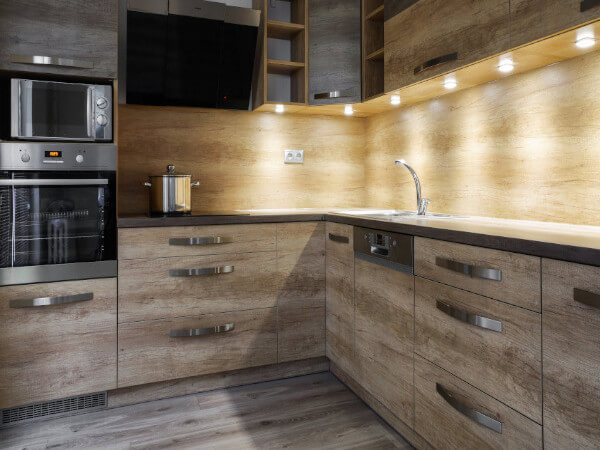
Just because you have a bathroom that is a bit on the small side, does not mean that you can’t make it an incredible space, you just need the right small bathroom remodel ideas. A good small bathroom design will make it seem bigger than it is after a small bathroom remodel. When preparing to
The post Top 15 Gorgeous Small Bathroom Remodel Ideas for Every Taste appeared first on Kitchen Remodeling & Bath Remodel Services | USA Cabinet Store.
Millennials’ Impact Seen Increasing for 2022 Kitchen, Bath Designs
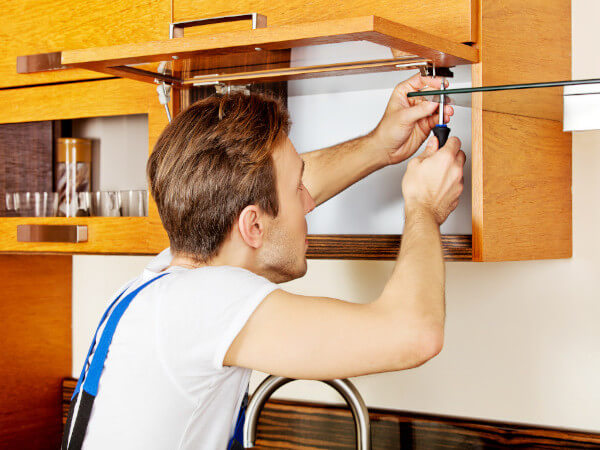
HACKETTSTOWN, NJ Millennial clients – particularly those with children – are increasing in influence while the impact of Baby Boomer clients is gradually declining and Gen X is remaining constant, according to a 2022 Design Trends Forecast released this week by the National Kitchen & Bath Association.
The NKBA’s annual design trends forecast points to a gradual, yet palpable, shift in the primary customer base for new and remodeled kitchens and baths, after several decades in which the market was driven largely by a huge cohort of Baby Boomers (aged 57-75) and Gen Xers (aged 41-56) consumers.
While baby boom and Gen-X consumers remain the industry’s predominant buying force, the steady increase in business from Millennial clients (ages 25-40) is increasingly impacting both market share and anticipated kitchen and bath design trends, according to the NKBA, which said Millennials’ impact has “a high probability of increasing in the future.”
“Those working with Millennials see slightly less-expensive projects, but that’s likely driven by Millennials’ lower disposable income during their current life stage,” said the NKBA, whose 2022 Design Trends Forecast was based on a survey of approximately 650 designers, dealers, and other design professionals. The survey’s aim was to identify styles, features and materials that are expected to be more popular in the next several years; to identify the products that have the most dramatic impact on today’s kitchens and bathrooms; to assess if there are notable variations in designer client base profiles; and to predict if client base profiles are predictors of perceived design trends.
Among the overarching themes emerging from the NKBA’s 2022 survey is that kitchen clients generally want flex space for work, touchless fixtures, easy-to-clean surfaces, outdoor living areas, LED lighting and recycling storage. There is also a concerted desire for mobile-friendly spaces, healthy cooking, app-controlled appliances and voice-activated lighting, the NKBA said.
In the bathroom, consumers want a large shower, and are likely to remove tubs in order
to allocate more space or access to storage/dressing areas, the NKBA said. There is also a pronounced need for energy and water efficiency, connected products such as water temperature controls, entertainment and communication, the association added.
In general, new kitchen and bathroom design is emerging from nature-inspired themes, the NKBA reported. “Organic, natural styles are prominent in both kitchens and bathrooms, especially among Millennials, (and) increased natural light with large, high-performance windows and doors for outdoor access will be prominent,” the NKBA said.
“Homeowners have a desire for spaces that can multi-function,” the NKBA observed, pointing to a growing trend toward large islands for food prep that also function as dining tables, homework and work from home; flexible space for home office activities; pantries that include space for storage and a working area for small appliances; and workstation sinks with built-in features (drying racks,
cutting boards, etc.) In addition, bathrooms that connect to dressing areas and/or laundry facilities, and vanities and medicine cabinets with outlets are also experiencing increased popularity.
When designing new spaces, homeowners are generally thinking about the following:
n Cleanliness: easy-to-clean surfaces and countertops that are sanitary and non-porous. The current strong demand for quartz is expected to continue, as are the popularity of larger-format tile or slabs with less grout, and touchless faucets.
n Sustainable design: 100% LED lighting; a dedicated recycling area; low-E windows and doors; Energy star/efficient products; EPA WaterSense fixtures; VOC-free paint; products with recycled materials, and radiant flooring.
n Universal design: spaces that will allow for aging in place; curb-less showers; fewer free-standing tubs, grab bars, seats in showers and-held shower heads.
Although homeowners are excited about integrated technology, it is not being utilized in most projects. Specifically, only 30% and 21% of kitchen and bath projects, respectively, include integrated technology features, the NKBA reported.
“Designers have new ways to interact with their clients, especially Millennials,” the NKBA said. “Future design projects will include a mix of in-person and virtual meetings. In-person meetings both in designer’s offices and at the client’s home will be most prominent.
“Designers will (also) take advantage of virtual channels with video calls and video meetings with clients,” NKBA researchers added. “Millennials are more open to virtual meetings while Boomers are looking for regular onsite meetings at their home.”
The post Millennials’ Impact Seen Increasing for 2022 Kitchen, Bath Designs appeared first on Kitchen & Bath Design News.
Did you miss our previous article…
https://anekitchencabinets.com/?p=646
VA-Based Supplier Dave’s Cabinet is Acquired
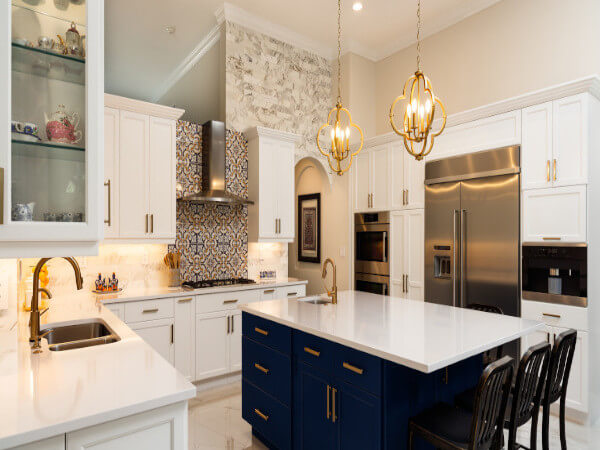
CHESAPEAKE, VA — Dave’s Cabinet, a leading cabinet manufacturer in the Mid-Atlantic region, has announced that the ownership interest of company founder David Alderman CMKBD, has been purchased by John K. Morgan, CEO of Green Forest Cabinetry.
Terms of the transaction were not disclosed.
Dave’s Cabinet, founded in 1980, occupies three manufacturing buildings on approximately 40 acres of land in Chesapeake, VA. The business consists of a fully equipped end-to-end cabinet manufacturing/finishing facility, a retail division, plus a modern granite/quartz fabrication unit.
“I am incredibly proud of the 40+ years of Dave’s Cabinet’s success, especially the commitment and work to better our local community,” said Morgan, who, along with Alderman, is a past president of the National Kitchen and Bath Association (NKBA).
“I could not be more pleased to have the opportunity to lead his legacy to the next level of tomorrow’s micro-manufacturing world,” Morgan added.
Under the terms of the agreement, Julie Boone will retain her existing ownership interest in Dave’s Cabinet, said the company, which also announced a continuation of an annual $5,000 grant/scholarship to both the Great Bridge Baptist Church, a local parish, and the student program at the NKBA nationally.
The post VA-Based Supplier Dave’s Cabinet is Acquired appeared first on Kitchen & Bath Design News.
William Ohs Acquires PA Luxury Cabinet Supplier
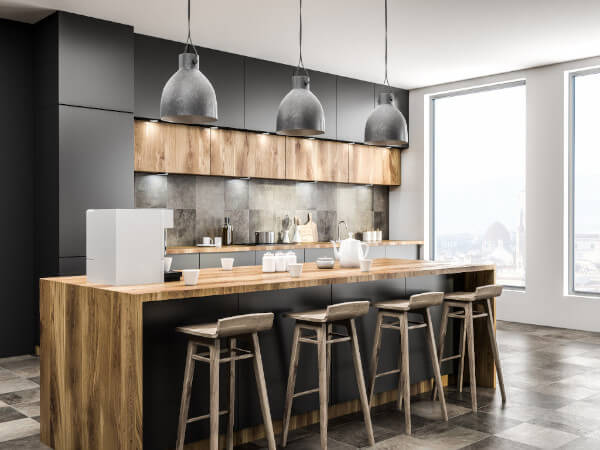
DENVER — William Ohs, the Denver-based manufacturer of luxury cabinetry and furniture, has acquired Draper DBS, a Bucks County, PA custom cabinet supplier, “merging two companies that are well-established and respected in the luxury cabinet industry,” the companies announced.
Terms of the transaction were not disclosed.
“The combination of Draper DBS and William Ohs brings together the ideas and manufacturing concepts of two legendary visionaries in the luxury kitchen market,” said Rick Casey, v.p./manufacturing for William Ohs, founded in 1972 by industry pioneer Bill Ohs. “The combined synergies create both exciting and unparalleled opportunities moving forward,” Casey added.
William Ohs and Draper DBS “will be able to provide the same detail-oriented approach to a larger market while capitalizing on increased manufacturing efficiencies,” corporate officials said.
“I am excited and humbled to be drawn into the most creative act of wood joinery in the industry, the dovetailing of the crafts, hearts, and creative legacies of Draper DBS and William Ohs,” said William Draper, founder of Draper DBS. “This will be an intertwining of our combined strengths, histories, and visions to cultivate the future inspirations of all those who love great and evolving furnishing design.”
The post William Ohs Acquires PA Luxury Cabinet Supplier appeared first on Kitchen & Bath Design News.
Did you miss our previous article…
https://anekitchencabinets.com/?p=636
Challenges Persist as 2021 Winds to Close

The U.S. housing and residential remodeling markets continued to post gains as 2021 wound to a close, although COVID-related supply chain disruptions, coupled with labor and materials shortages, continued to put a crimp on more-robust growth. Among the key statistics and forecasts released in recent weeks by government agencies, research firms and industry-related trade associations were the following:
RESIDENTIAL REMODELING
Demand for remodeling remains strong, and remodelers “are doing quite well as long as they can adequately deal with material and labor shortages,” according to the latest Remodeling Market Index (RMI) compiled by the National Association of Home Builders. The Washington, DC-based NAHB last month released its NAHB/Royal Building Products Remodeling Market Index (RMI) for the third quarter of 2021, posting a reading of 87, up five points from the third quarter of 2020. The finding is a signal of residential remodelers’ confidence in their markets, for projects of all sizes, the NAHB said. “We are seeing strong demand and continued optimism in the residential remodeling market, despite the fact that supply constraints are severe and widespread,” said NAHB Chief Economist Robert Dietz. “For example, well over 90% of remodelers in the third quarter RMI survey reported a shortage of carpenters. And 57% of remodelers reported having slightly raised prices for projects over the last six months, with another 28% indicating a significant increase in price, due in part to higher material costs and ongoing strong demand. Half of these remodelers reported some pricing out of demand due to higher prices for remodeling projects.”
HOUSING STARTS & NEW-HOME SALES
Single-family home sizes are reportedly rising as an offshoot of the COVID-19 pandemic, reversing a recent trend toward downsizing, as homeowners are seeking additional residential space for a wider range of purposes, particularly teleworking and school-related activities. According to the National Association of Home Builders, the median size of a newly built single-family home increased to 2,297 sq. ft., while the average size for new single-family homes increased to 2,540 sq. ft. Following Great Recession lows, home sizes rose between 2009 to 2015, as entry-level new construction was constrained, according to the NAHB. In contrast, home sizes declined between 2016 and 2020, as more starter homes were developed, the NAHB said. “Going forward, we expect home sizes to increase again, given a shift in consumer preferences for more space due to the increased use and roles of homes in the post-COVID-19 environment,” said NAHB’s Dietz.
EXISTING-HOME SALES
Current high prices are resulting in “an unbalanced market,” although home prices would “normalize with additional supply,” according to the chief economist for the National Association of Realtors. Total housing inventory, according to the latest NAR figures, was down 13.4% from one year ago. Unsold inventory sat at a 2.6-month supply at the current sales pace, down from 3.0 months at the same time last year, the NAR reported. The median existing-home price was up 14.9% from the same time in 2020. The market has witnessed more than 100 straight months of year-over-year gains, the NAR noted, adding that the pace of price appreciation has outpaced wage gains, “making homeownership increasingly unattainable.”
The post Challenges Persist as 2021 Winds to Close appeared first on Kitchen & Bath Design News.
Did you miss our previous article…
https://anekitchencabinets.com/?p=633
Wrapping 2021 and Looking Ahead
What a long, strange year it’s been! Let’s take a look back at the dominant 2021 trends and anticipate what 2022 will likely bring.
While it’s hard to predict with clarity, given some major unknowns, here are some hot takes from across the industry and the country from unique perspectives:
San Diego-based designer Tatiana Machado-Rosas, Jackson Design and Remodeling’s design department manager;Long Island, New York-based kitchen and bath designer Susan Serra;Home Technology Association CEO Josh Christian;Bob Gifford, business development director forluxury retailer Hastings Tile & Bath in New York City;Susan Chung, research v.p. with the American Society of Interior Designers;Boise, Idaho-based custom home builder Emily Clark of Clark & Co. Homes.Wellness Trends Accelerate
Designers have been focused on wellness for decades with interest from some clients, but the pandemic really drove its importance home. Literally! “For 2021, a continued focus on health and hygiene helped drive the kitchen,” observes Chung. She also sees its importance elsewhere, noting that “the bathroom really became a place to escape the stress and fear of the outside world.” Wellness showed up in outdoor, work from home and mindfulness spaces, too. “As the home became a hub for all types of activities colliding together, homeowners were looking to design as one way to alleviate stress and promote tranquility,” the ASID executive concludes.
Beyond the spaces noted above, wellness showed up in related rooms. “The switch from what had been called the ‘mud room’ to what is now called the ‘utility room’ or pre-wash area; so many people wanted a location to drop groceries and sanitize items before heading into their homes,” shares Gifford. This is tied to an increasing interest in hands-free functionality, he explains: “Soap dispensers, faucets, hand-towels – anything and everything that gave people a sense of comfort and control over their environment.”
Kitchen Design Trends
“Multipurpose kitchens with open floor plans continued to be a strong trend as clients look to make their kitchen the vibrant heart of their home,” says Machado-Rosas. “Integrating smart technology, particularly with more people using the kitchen space to work from home or attend virtual classrooms, became even more essential. In addition, clients had a renewed interest in keeping their spaces hygienic, which led to a desire for easy-to-maintain materials for countertops and flooring,” she adds. The design manager conversely sees a resurgence in natural stone for sinks and countertops, attributing it to a desire for the sense of calm that comes from a connection to nature.
Across the country, Serra sees three dominant trends: “Wellness on steroids, cooking convenience and visual comfort.” Health and cleanliness were the top concerns she was hearing from clients. This included “performance materials in surfaces, as well as appliances [and fixtures] that promote healthy living and preserve our health, such as renewed attention to proper ventilation, enhanced touchless faucets and larger sinks going mainstream – often with two faucets” as a few examples.
Changes in shopping and eating habits are also influencing kitchen design, the New York designer believes. “A new hybrid type of cooking has emerged; time (but not too much) is being taken to create healthy homemade meals from fresh, quality foods, assisted by smart, efficient appliances. The purchase of a freezer for bulk food storage, better cabinet storage solutions and designing in more countertop space creates a near utopia for one or more cooks.”
Visual comfort is also a trend, Serra has observed. “As the kitchen has taken on more lifestyle functions in the past 18 months, homeowners are much more open to creative design solutions,” she shares. This has meant larger windows, nature-inspired texture and finish mixes, and comfortable dining areas with flexible designs or banquettes. “The transition of the kitchen aesthetic to more seamlessly integrate with surrounding rooms lessens the perception of the kitchen as workspace and nudges it more toward a living space,” she suggests.
Clark has also seen kitchens evolve, she comments, citing an “expansion of the scullery or the working pantry, work zones as opposed to a work triangle, and multiple mini-kitchens for multi-generational living.” Antimicrobial counters, touchless faucets and chef sinks also support healthy living and cooking, the home builder notes. Natural finishes, warm woods and creative design solutions with saturated cabinet colors are showing up in her northwestern region too.
Bathroom Design Trends
“The emphasis in bathroom design has been to create a highly customized space that communicates joy and tranquility,” Machado-Rosas observes. “Clients have been seeking a personal retreat with a spa-like atmosphere where they can truly relax.” These have included steam showers, heated floors, statement tubs – sometimes custom – and premium features catering to clients’ personalized needs and desires. Natural materials show up in these luxury bathrooms, too, the San Diego designer notes. “Balancing porcelain or glass tile with natural woods and stones and amplifying natural light have been popular,” she adds.
Clark sees the trend toward personalized luxury in her Idaho homes, as well. These include “sculptural soaking tubs, steam showers with light, sound and aromatherapy, tiles with hand-cut looks and subtle tonal differences, reeded or fluted textures, oversized area rugs and diaphanous drapes.”
“All during 2021, we worked with designers who wanted (and still want) the flexibility to customize their projects by using different colors and finishes for their vanities,” Hastings’ Gifford recalls. “For tubs, the solid surface materials remain popular because they have a supple texture and they are easy to clean and maintain.” The New York retailer also saw strong interest in hands-free faucets with white finishes and versatile wall-mounted vanities.
Technology Trends
Technology continued to trend in kitchen and bath projects, and it shows no sign of slowing. Smart features have a growing presence in kitchens and bathrooms, Home Technology Association CEO Christian notes. “We are seeing entertainment products being installed in kitchens like waterproof TVs built into the counter backsplash, charging docks, tablets for cooking tutorials or recipe surfing, built-in ceiling speakers or a simple wireless speaker on the counter.” He is also seeing sleek, integrated outlets, lighting keypads and flush-mounted concealment systems so that the room’s electronics are present but hidden.
“With bathrooms, we are seeing a lot of circadian rhythm lighting being installed so that time spent in the bath is consistent with a homeowner’s sleep cycles,” he says. Additional bathroom technology trends cited by the designers include smart toilets, enhanced shower systems, built-in sound and lighting systems and smart shadings.
Machado-Rosas sums up the situation this way: “We saw a significant increase in clients asking for fully integrated smart technology in their homes. Because of the combination of enhanced affordability and ease of use, we expect to see this trend grow exponentially in the years to come.”
Predictions for 2022
ASID’s Chung is anticipating that flex spaces, universal design, locally sourced products because of supply line and sustainability concerns will trend in 2022. She also believes that the pandemic has increased the perceived value of designers in helping their clients navigate the challenges brought about by the pandemic.
HTA’s Christian anticipates a strong push toward wellness technology, indoor and outdoor home theater spaces and the death (at least short-term) in ‘just-in-time’ delivery systems. He also sees designers working earlier in the process with technology professionals to more seamlessly integrate their projects.
Hasting’s Gifford predicts the increasing importance of video tours to replace travel and live events where possible. He also anticipates more integrated sink/vanity options, solid surface tubs continuing their popularity and, though no one wants to hear this, he notes, price increases across all products because of the increased costs of raw materials.
Among the designers, Serra anticipates appliances with upgradable technology, more dining space in kitchens, and more storage for multiple cooks. Machado-Rosas expects to see technology show up in more products and for smart home systems to become more affordable, a continued attention to creating calming spaces, multi-purpose rooms, larger pantries and customized bathrooms. She also expects minimalism to trend strongly for its low-
maintenance benefits.
Home builder Clark expects to see more hidden kitchens, induction, multi-function appliances and less upper cabinetry. She anticipates bathrooms getting more artisanal materials, sound and light enhancements for spa effects, and even what she calls family wellness suites. These would resemble high-end spa facilities with steam or sauna areas, grooming stations and central shower stalls.
While 2021 kept many design industry professionals at home, dealing with inventory and other challenges, 2022 is already shaping up to be a more active, in-person kind of year. The Kitchen & Bath Industry Show, paired again with the International Builders’ Show, will meet in person in Orlando in February. Exhibitors reflecting the trends observed by these professionals will be on hand to share their wares. I’ll be there. Will you?

Jamie Gold, CKD, CAPS, MCCWC is an author, wellness design consultant and industry speaker. Her third book, Wellness by Design (Simon & Schuster), published September 2020. You can learn more about her Wellness Market presentations, books, Wellness Wednesdays Clubhouse conversations and consulting services at jamiegold.net.
The post Wrapping 2021 and Looking Ahead appeared first on Kitchen & Bath Design News.
Builder Confidence Reported Up Despite Market Challenges
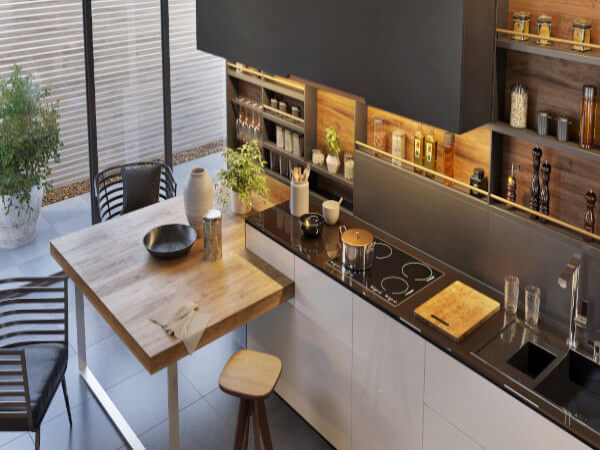
WASHINGTON, DC — Despite inflation concerns and ongoing production bottlenecks, builder confidence edged higher in December for the fourth consecutive month on strong consumer demand and limited existing inventory, the National Association of Home Builders reported.
Builder sentiment in the market for newly built single-family homes moved one point higher to 84 in December, according to the NAHB/Wells Fargo Housing Market Index (HMI), released today.
“While demand remains strong, finding workers, predicting pricing and dealing with material delays remains a challenge,” said NAHB Chairman Chuck Fowke.
“The most pressing issue for the housing sector remains lack of inventory,” observed Robert Dietz, chief economist for the Washington, DC-based NAHB. “Building has increased but the industry faces constraints, namely cost/availability of materials, labor and lots. And while 2021 single-family starts are expected to end the year 24% higher than the pre-Covid 2019 level, we expect higher interest rates in 2022 will put a damper on housing affordability.”
The post Builder Confidence Reported Up Despite Market Challenges appeared first on Kitchen & Bath Design News.
Did you miss our previous article…
https://anekitchencabinets.com/?p=627
Kitchen Cabinets and Kitchen Remodeling Trends
Kitchen Remodels Omaha have many types of materials for kitchen cabinets. The most common ones are wood, laminates, and metals. They are made of plywood, which is layers of solid wood bonded together, or veneers, which are thin sheets of real wood bonded to another material. There are also less expensive products made of particle-board or multi-density fiberboard. The most expensive ones have thermofoil, which is a resin that permanently hardens after being heated. They are usually more expensive than other materials, such as particle-board or multi-density-fibreboard.
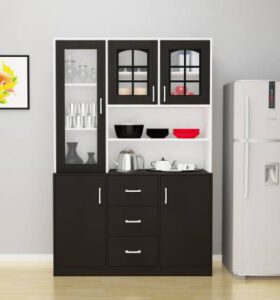
While stock cabinets are less expensive than custom ones, they aren’t necessarily the best choice for your kitchen. The downside is that you’ll only be able to get one color or style, and there are more limitations when it comes to style and color than you’d find with custom cabinets. Aside from the limited options, stock cabinets are much quicker to install than customized options. But they come with a limited warranty and may be unattractive.
The demand for kitchen cabinets is largely fueled by the new home construction sector. As kitchens become bigger, consumers need more space to store their cookware and appliances. In addition to this, more space is required for cabinets. This adds to the utility of a kitchen. As the housing market rebounds, the demand for high-quality cabinets will increase. However, re-selling of kitchen cabinetry is expected to remain high for the foreseeable future.
The kitchen cabinet industry is a subset of the larger furniture industry, so trends within that industry will affect its growth. The biggest factors that will affect this market are cost and availability of raw materials. Despite this, the cabinet industry is still very strong. and has borne the brunt of downturns in the furniture and housing markets. And while you might be tempted to buy cheaply made kitchen cabinets, you’re better off investing in high-quality ones.
As a homeowner, you’ll be the most likely to make mistakes with kitchen cabinets. While it is possible to buy inexpensive kitchen cabinets, you’ll be better off with higher-quality ones. In addition to reselling, they’ll also have the lowest prices. Using certified wood for kitchen cabinets will help you save money and maintain a beautiful environment. They’re also durable and can last for years. They’ll last for years to come.
The top spenders in this category are key to the overall growth of the industry. More than half of all kitchen cabinetry is purchased for residential use by homeowners. These households account for nearly 60% of all production. The remaining 18 percent is consumed by commercial and institutional applications. Some of the most popular brands in this category are MDF and wood. Both types are durable and affordable. The price of kitchen cabinets depends on the quality of the materials used. They’re easy to maintain, and they look great in the home.
Some people want their kitchen cabinets to be made of wood, but some of them aren’t comfortable with this material. It’s crucial to choose a material that is safe and durable. You’ll want to be sure the material is made of certified wood. While melamine is a cheaper alternative, it is still the most common option for most consumers. There are many different types of particle board cabinets. You’ll find a lot of different materials in this category.
For small cabinet makers, retail dealers are the primary source of sales. They make up about 75 percent of sales for smaller cabinet makers. Those who purchase cabinets for their own homes have more choices than those who purchase from a retailer. Those who choose to buy online should consider the benefits of an FSC-certified wood product. If they don’t, they’ll be buying something that’s derived from a non-certified source.
Consumers can also choose the type of wood they want. Many consumers are willing to use the same wood used for their kitchens for other areas of their homes. Some designers even repurpose their kitchen cabinetry to be used in other rooms. It’s important to consider the environment before choosing a certain type of wood. Ensure that it’s made of sustainable wood. Purchasing hardwoods that have a certification can help prevent deforestation.
Battling the Supply Chain Woes
Qianyan Cheng has felt the sting of the industry’s historic supply chain disruptions.
The co-founder of INOX – the Sacramento-based supplier of decorative hardware and door locks – Cheng has reported lengthy shipment delays of international goods since the onset of COVID-19. Shipping costs, Cheng tells Kitchen & Bath Design News, have risen exponentially in the face of the public-health crisis. The growing backlog of cargo ships waiting to offload in key ports, she says, has increased more than fourfold in some cases, impacting distribution throughout the company’s worldwide network of upscale hardware showrooms. Related bottlenecks have delayed remodeling and new-construction projects for months – or postponed them entirely.
And Cheng, of course, is far from alone.
Indeed, supply chain disruptions wrought largely by the coronavirus continue to prove a major impediment across virtually all segments of the kitchen and bath industry, including dealers, design firms, manufacturers, importers and building/remodeling construction firms.
In some instances, the supply chain timeline has doubled or tripled due to increased demand coupled with port closures, worker shortages and travel restrictions, as well as vaccine and testing mandates for seafarers, truck drivers and other transport workers. Design firms are witnessing increasing lead times, raw material scarcities and double-digit price hikes for certain products. Labor rates have skyrocketed in the face of worker shortages. Cancellations and postponements have increased, with clients opting to put projects on hold until wait times and costs normalize. At the same time, a sizable number of manufacturers report ongoing capacity restraints, a scarcity of raw materials and the discontinuation of slow-moving product lines to alleviate production constraints.
Equally vexing is the likelihood that the current disruptions will linger well into 2022, and perhaps beyond, despite growing appeals for corrective action.
To wit, the Association of Home Appliance Manufacturers, the organization representing many of the industry’s leading appliance suppliers, last month lent its support to a coalition of trade associations urging government policymakers to address ongoing challenges that business leaders say are damaging the competitiveness of manufacturers, stalling America’s economic recovery and resulting in unprecedented damage to the global product supply chain. AHAM’s call for action, following a similar appeal by the National Association of Home Builders, came one day after a coalition of workers from across the supply chain warned that global trade is facing a potential system collapse if world leaders fail to restore freedom of movement to transport workers.
While some supply chain challenges – such as import tariffs – require long-term, systemic solutions, others can be mitigated by kitchen and bath dealers, designers and remodelers who are willing to temporarily alter their business approach.
For example, many design firms report that they’ve become adaptive to current supply chain challenges, ordering products months in advance to circumvent long lead times and lessen the sting of price hikes. Others say they’ve ordered materials as soon as project contracts are signed, even if a job is weeks out, or have stocked up on commonly used products in an effort to reduce delays. Still others are offering clients alternative products that are easier to obtain or already in stock. Frequent and candid communication regarding extended lead times, back orders and volatility in delivery dates has also become more critical than ever in managing client expectations and preserving relationships, dealers and designers say.
The kitchen and bath design trade has faced a multitude of challenges over the course of its existence. The advent of big box stores and e-commerce has altered the industry’s competitive set. Corporate bankruptcies, ownership changes, factory closures and divestitures have reshaped the manufacturing and retail landscape. Fast-changing lifestyles, homeowner demographics, product introductions and consumer hot buttons have exacerbated the need to stay abreast of what’s going on. Economic downturns have occasionally knocked the industry on its heels.
Astute dealers and designers, for decades, have proven resilient to these and other changes. They’ll doubtless discover ways to survive the current supply chain disruptions, as well.

The post Battling the Supply Chain Woes appeared first on Kitchen & Bath Design News.
Did you miss our previous article…
https://anekitchencabinets.com/?p=624